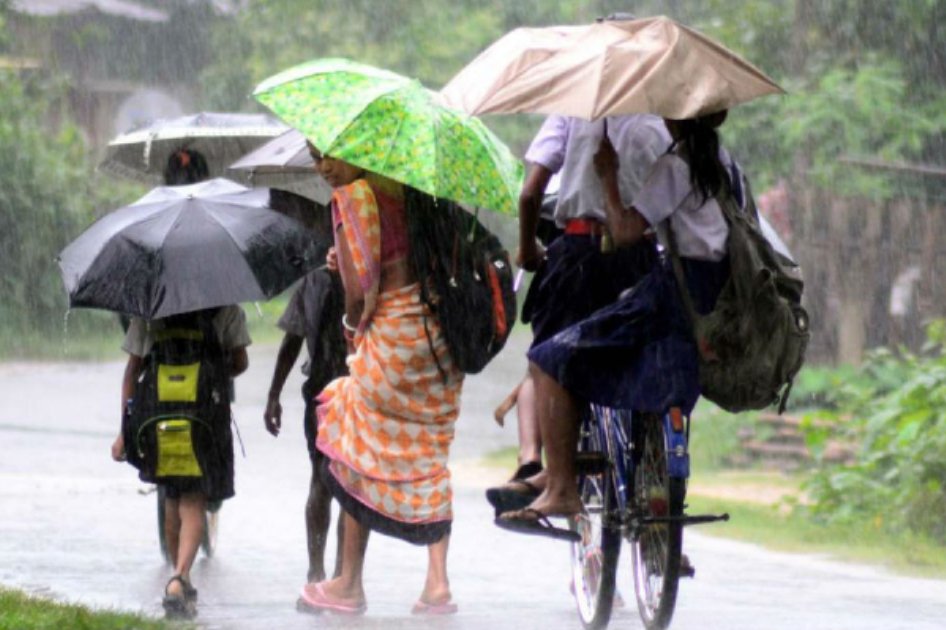Padmabill in western Tripura’s Khowai district was selected for the ‘Vulture Conservation and Breeding Centre’ as the area had a higher concentration of vultures
Agartala, July 25 (IANS): Though captive conservation of vultures is not viable, the complete extinction of vultures which are identified as critically endangered by the International Union for Conservation of Nature, is likely if no action is taken immediately, experts warn.
According to Action Plan for Vulture Conservation 2020-2025, five vulture conservation and breeding centres are being set up in Tripura, Uttar Pradesh, Maharashtra, Karnataka and Tamil Nadu.
A ‘Vulture Conservation and Breeding Centre’ is being established at Padmabill in western Tripura’s Khowai district to facilitate conservation of the critically endangered species in northeastern India so that the ecosystem remains healthy.
Padmabill was selected for the ‘Vulture Conservation and Breeding Centre’ as the area had a higher concentration of vultures. Recently around 30-40 vultures were sighted in Khowai district.
Veteran wildlife and biodiversity expert Dvijendra Kumar Sharma said that the conservation programme appears to be the only preservation action which could save the vultures from extinction.
He said that based on a mathematical model, if 150 pairs of three species could be held and bred in captivity, it would be possible to get a derived population of 600 pairs of each of the three species, within ten years of the beginning of the release programme.
“The establishment of a long term conservation breeding programme is the only possible way of reintroducing the vultures in the wild, so that they could play their ecological role in the environment. The conservation breeding centres have been set up by the State Governments with the help of the Bombay Natural History Society (BNHS),” Sharma told IANS.
The BNHS’s principal scientist Dr Vibhu Prakash Mathur last week conducted a workshop with all the stakeholders including villagers and forest and wildlife officials to make the Padmabill ‘Vulture Conservation and Breeding Centre’ a success.
Sharma, who last month retired as the principal chief conservator of Forests of Tripura, said that the Vulture Action Plan 2006 of the Ministry of Environment and Forests and South Asian Vulture Recovery Plan 2004, recommended a complete ban on the veterinary use of the diclofenac drug and its illegal usage in veterinary practice leading to diclofenac induced mortality in vultures.
The veterinary use of the non-steroidal anti-inflammatory drug (NSAID) diclofenac in livestock is considered to be the main, and perhaps the only, cause of the population decline, he pointed out.
“Vultures are exposed to toxic levels of diclofenac when they feed on carcasses of livestock which have died within a few days of treatment, and which contain residues of the drug. The diclofenac causes visceral gout and renal disease in the vultures, causing their death.
“In some African countries, the vultures get killed by the poison that is mixed with carcasses to ward off predators like lions, which poses a threat to the livestock.”
A few drugs were identified as vulture safe drugs after extensive safety testing in South Africa and India but these are not very popular because they are slow acting and more expensive than diclofenac, he added.
Sharma said that India has nine species of vultures in the wild, of which five belong to the genus Gyps.
Three Gyps vultures – the Oriental White-backed, Long-billed Vulture and Slender-billed Vulture are residents and the remaining two, the Eurasian Griffon and Himalayan Griffon are largely wintering species and a small population breeds in the Himalayas.
Oriental White-backed Vulture and Long-billed Vulture were abundant across large parts of India until the 1990s, he said.
The BNHS conducted nationwide raptor surveys in many parts of India between 1991 and 1993 using a road transect method. The survey was repeated in 2000 and the results were dramatic.
The populations of Oriental White-backed Vulture and Long-billed Vulture had declined by more than 92 per cent between 1991-93 and 2000. By the year 2007, the population had declined by an astonishing 99.9 per cent for Oriental White-backed Vultures and by 97 per cent for long billed and slender billed vultures.
The decline in vultures has also affected the traditional custom of the Parsis of placing their dead in the ‘Towers of Silence’ for vultures to feed upon.
Another wildlife expert Prasenjit Biswas, who has been studying the movements and traits of vultures for over a decade, said that the vultures are also listed in Schedule-I of the Indian Wildlife Protection Act (1972) which is the highest category of protection for wildlife in the country.
“Animal carcasses are also now safely disposed off depriving the vultures of their food source,” said Biswas, a retired Indian Forest Service officer.
According to experts, declining forest cover is one of the main causes for the falling population of wild animals and birds.
According to the India State of Forest Report 2021 (ISFR 2021) released in January this year, the forest cover in the 140 hill districts of the country has shown a decrease of 902 sq km (0.32 per cent) with all eight states of the northeast region also showing a decline.
As per the current assessment, the total forest cover in the hill districts is 2,83,104 sq km, which is 40.17 per cent of the total geographical area of these districts. Hill districts are those which have 2/3rd area as hills.
Arunachal Pradesh, that has 16 hill districts, has shown a loss of 257 sq km forest cover compared to 2019 assessment, Assam’s three hill districts (-107 sq km), Manipur’s nine hill districts (-249 sq km), Mizoram’s eight hill districts (-186 sq km), Meghalaya’s seven hill districts (-73 km), Nagaland’s 11 districts (-235 sq km), Sikkim’s four districts (-1 sq km), and Tripura’s four districts (-4 sq kms).
The total forest cover in the northeastern region is 1,69,521 sq km, which is 64.66 per cent of its area.
The latest assessment shows a decrease of forest cover to the extent of 1,020 sq km (0.60 per cent) in the region.







